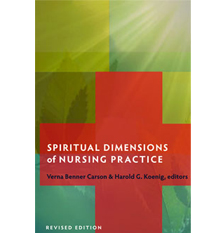
eligious attendance seems to be the characteristic most commonly associated with better health,” says Dr. Harold G. Koenig. This is no casual, throwaway remark: he is referring to

the findings of up to 100 recent studies on the effect of religious attendance on health outcomes. They have enabled researchers to identify the key question to ask. “The purest one is simply: how often do you go to church, or synagogue, or mosque? That is the most powerful predictor, of all religious characteristics, on health outcomes, on longevity, on well-being.”

Koenig, professor of psychiatry and behavioral sciences at Duke University Medical Center, is in charge of three programs supported by Templeton grants. The first, which finished in 2007, was a Fellowship program that funded two years’ training for eight post-doctoral Fellows as young researchers in religion and health. The intention was to create the next vanguard of scientists to study, lead, and define the field of religion and health.

“It was a very successful program,” reports Koenig, “not only because of the Fellows we enrolled, but also there were numerous other people who decided to come and study in our Fellowship. There must have been 12 or 13, including one from Brazil and one from Korea.” Almost all of them are now in academic posts at various universities, with at least half doing research and publishing in the field.

This success was followed up with the launch of an RFP program funded by a $2 million Templeton grant: “Religion and Health: Effects, Mechanisms, and Interpretation.” The response was overwhelming. “There were 135 Letters of Intent,” says Koenig, “honed down to 32 full proposals, then down to seven grantees.” Each successful scholar received a grant of $200,000 to research the contribution of context and caring as part of the mechanism that accounts for the effects of religion on health, in particular the effects of membership and practices within a faith community.

“We were looking for a diversity of different proposals, not only from top researchers, but also from people who were more theologically inclined.” Koenig was gratified that exactly such diversity was achieved, citing among the grantees Neal Krause, “a top researcher in the field of religion and health”; Cheryl Holt, from the University of Alabama, who is studying religion and health mechanisms among African-American men and women; and John Astin and Cassandra Vieten whose research covers a broader type of spirituality, including meditation, Eastern spirituality and possibly even New Age practices.

The third initiative in which Koenig is involved, together with his colleague, Dr. Keith Meador, is the program “Spirituality, Theology, and Health: An Initiative for Advancement in Research and Scholarship.” Its primary aim is to form and maintain a community of scholars, based at Duke University, engaged in spirituality, theology and health, as well as a similar network of senior and junior researchers. The program began in October 2007 and seminars with visiting scholars were held during each of the first five months. Weekly literature reading groups have also been well attended.

“There are 10 to 15 scholars who we meet with regularly,” says Koenig, “and discuss issues such as what is health? Is it more than physical health? What is real health? What is life-fulfilling health? Other than just pathology, what is vibrant health?” But the biggest questions, he thinks, are even more fundamental. “The big questions have to do with what the heck are we talking about when we discuss religion, spirituality, and health? What are these terms? How do you define them and then how do you measure them? Research is about measurement.”

Koenig describes the response to his work within the healthcare community as “cautious, growing receptivity.” It has become impossible to ignore the mounting volume of research. “The amount of studies that have been done since the year 2000, in the last seven to eight full years, probably exceeds all the research in the 150 years prior to 2000,” he claims. The findings are obvious to healthcare workers: “People who are taking care of patients, the doctors and nurses, they can see that the person’s religious faith is a source of strength.”

Two influences that are also creating a more favorable climate are the growing phenomenon of patient power and the interest of the media. “Patients are becoming more vocal because they’re hearing all this in the media. The media have been extremely receptive because people in the United States are interested in religion. It’s a religious population, they’re interested in their health, and they want their faith supported as it relates to their health.” Patients with spiritual allegiances are encouraged when they learn that serious scientific research is confirming that religious practice may have a beneficial outcome on health.



 eligious attendance seems to be the characteristic most commonly associated with better health,” says Dr. Harold G. Koenig. This is no casual, throwaway remark: he is referring to
eligious attendance seems to be the characteristic most commonly associated with better health,” says Dr. Harold G. Koenig. This is no casual, throwaway remark: he is referring to  the findings of up to 100 recent studies on the effect of religious attendance on health outcomes. They have enabled researchers to identify the key question to ask. “The purest one is simply: how often do you go to church, or synagogue, or mosque? That is the most powerful predictor, of all religious characteristics, on health outcomes, on longevity, on well-being.”
the findings of up to 100 recent studies on the effect of religious attendance on health outcomes. They have enabled researchers to identify the key question to ask. “The purest one is simply: how often do you go to church, or synagogue, or mosque? That is the most powerful predictor, of all religious characteristics, on health outcomes, on longevity, on well-being.”